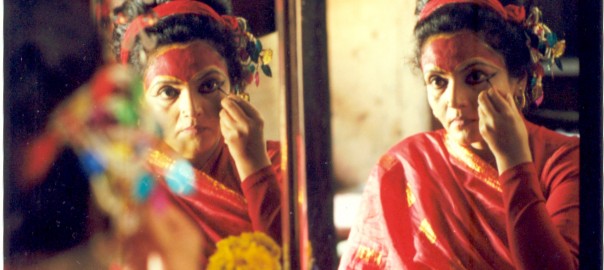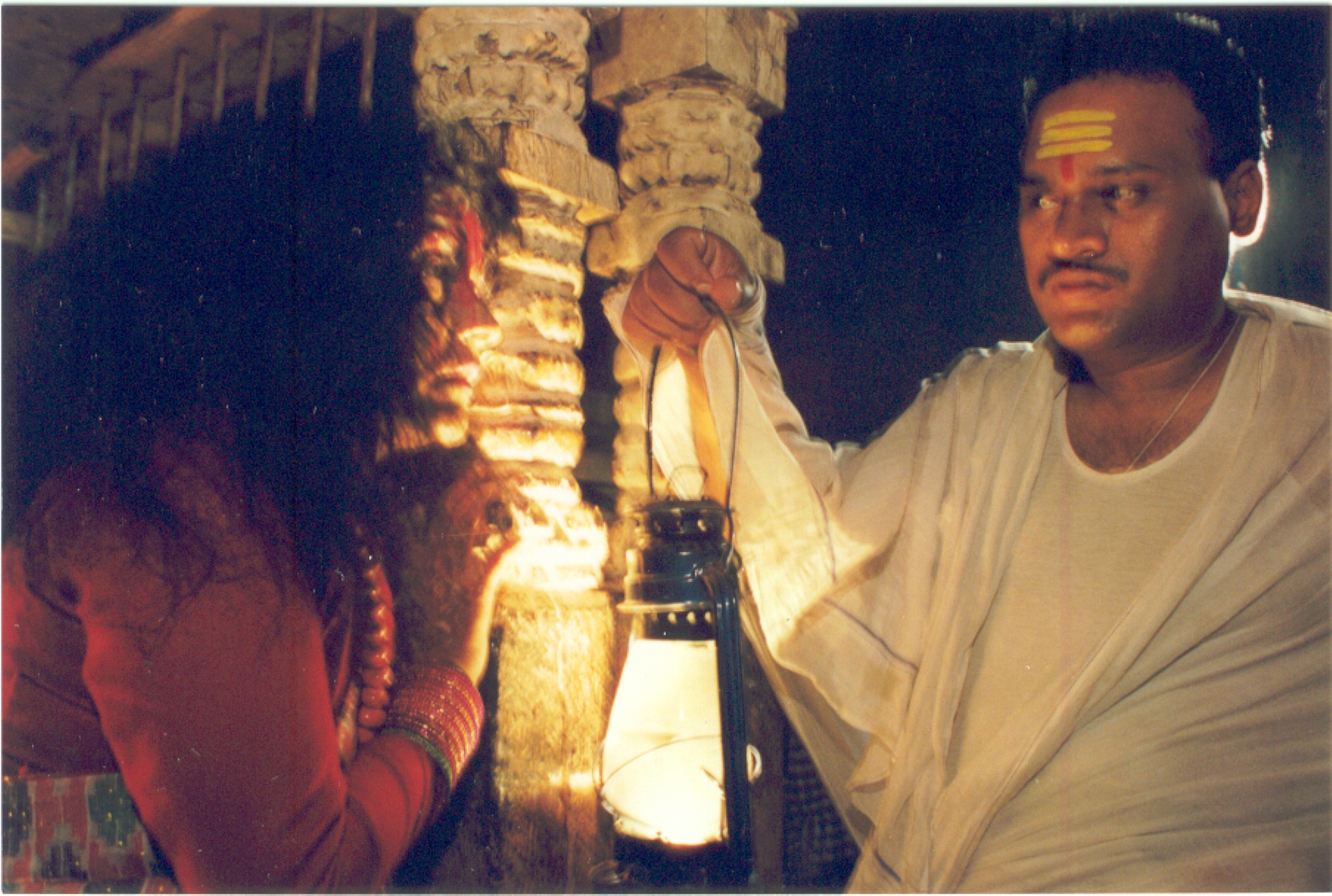Mukundo (Mask of Desire)


Dipak, boyishly handsome, a former football player, works as an uniformed guard for a successful businessman. Saraswati is a homely woman, who adores her footballer “hero” husband. With their two daughters, they are an ordinary, humble family, contented in most respects.
If there is one thing that life – or the gods – hasn’t given them, it is a son. Not unusual for a family in their society, it is an unresolved thread in their otherwise contented lives. Dipak wants a son, Saraswati wants him to be happy – these are lurking desires, waiting as it were to be plucked by fate.
There is much anxiety over Saraswati’s imminent pregnancy. One day while doing her standard prayers, a sadhu tells her only the goddess Tripura at the small brick shrine by the river-bank can answer her prayers. Saraswati does and it so happens a son is born. There is great joy, but a few weeks later, the infant dies, causing great sorrow, anger, and guilt.
The once-happy family begins to break down. Saraswati becomes ill, deeply depressed, and begins to exhibit signs of “craziness.” When she finally goes back to the goddess who she believes gave her a son, only to cause her greater sorrow, the Sadhu (Hindu hermit) suggests she get “treated” by a particular Mata, the vehicle (of possession) of the goddess.
Parallelly, we learn that the Mata, though reputed as a healer, has a particular history. Her husband left her at a young age, and thwarted love had lead to great emotional turmoil and even breakdowns, until she was possessed – chosen – by the goddess. The emotional upheaval of the Mata, a beautiful woman, however remains unresolved within her. She is deeply ambivalent about her shamanic role, about being “chosen,” and convinced only human love will restore her psychic/emotional balance.
It is not only fate but their inner wants that sweeps these characters together. They begin as friends. Saraswati is drawn to the Mata because she temporarily cures her and is fascinated by a spirit medium, the Mata by an ordinary human being’s warmth, but eventually more so by the boyish innocence of Dipak, which serves as a foil for her misdirected passion, and Dipak by the allure of something greater than he can ever understand.
The story has a violent ending, in the background of a frenzied jatra (religious festival), where people dance in collective intoxication…
Festivals
- 3rd Asian Film Festival, Tokyo, Japan, 1999
- Goteborg International Film Festival, Sweden, 2000
- Fribourg International Film Festival, Switzerland, 2000
- San Francisco International Film Festival, USA, 2000
- Fukuoka International Film Festival, Japan, 2000
- Vancouver International Film Festival, Canada, 2000
- Mumbai International Film Festival, India, 2001
- Academy Awards Consideration (Nepal) in Best Foreign Language Film, 2000
Broadcasts
- NHK, Japan
“Director Tsering Rhitar Sherpa’s keen observational skills, previously honed on documentary subjects, skillfully evoke the frantic activity and abundant contradictions of rapidly developing Kathmandu, where the sacred remains ubiquitous under the onslaught of modern life. Mask of Desire is an intense, complex film and another promising achievement for Himalayan cinema.”
Asian Week, April 20, 2000
“It’s a great movie. There is so much in it.”
Nepali Times, September 5, 2000
“Tsering Rhitar Sherpa deftly escalates the conflict between the medium’s belief in her goddess-given mission and her unruly human desires, while refusing to offer a neatly packaged answer to the central question of her credibility.”
The Japan Times, Sept. 19, 2000
